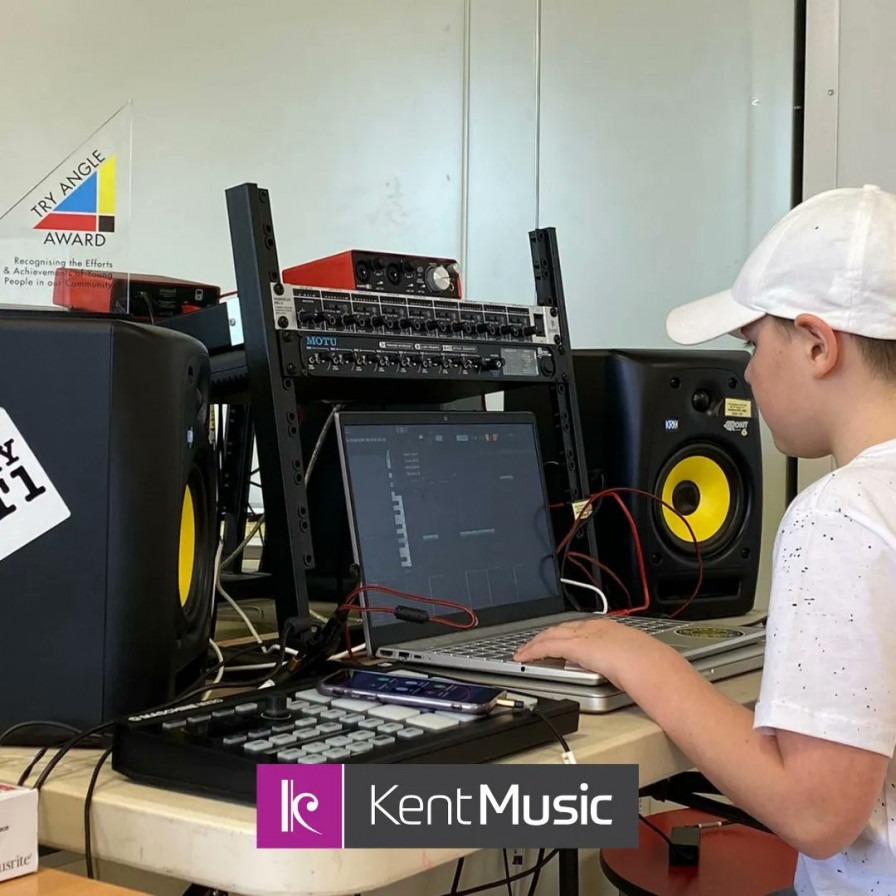Our Future Music Blog: Music Technology: ‘how can you incorporate it within a more traditional ensemble set up?’.

Kent Music
One of the rapidly developing areas of music performance is how music technology can be used as an instrument in a live setting. With technology becoming cheaper and cheaper and the quality of sounds and features they can deliver constantly improving, it’s a powerful tool for inclusive engagement and performance. A question I often hear though, is ‘how can you incorporate it within a more traditional ensemble set up?’.
Within Orchestra O.N.E, Kent Music’s inclusive ensemble, we’ve been incorporating music technology in our sessions for several years in different ways for a few different reasons.
Firstly, music technology can greatly increase accessibility for some participants, whether that be overcoming a barrier related to disability or because of their background and pathway into music. We’ve had success using hardware like Skoogs and Seaboards as well as software like Thumbjam, which offer a much more tactile and interactive music making experience to supporting participants who have barriers to accessing traditional instruments. Alongside this we’ve deployed a hardware and software combo of Ableton and a Push unit to support participants who may come from a less traditional, more producer background who want to experience composing and performing with a large-scale ensemble, but feel they can’t because they don’t play an instrument.
Secondly, related to the above, it gives those participants from a more traditional music background an opportunity to experience how music technology can be integrated with their current learning and how it might relate to their careers as musicians, if that’s the pathway they want to take. It also gives agency to the participants to be in control of certain sounds and when they happen, whereas before a sound man or facilitator may have had to be on hand to play or trigger the sounds.
Finally, it’s a great opportunity to incorporate non-traditional sounds or instruments that aren’t represented in the ensemble’s current line-up or could be doubled up. If the group are working on some film music, technology can be a great way to add depth with different sound effects, instrument plug-ins and synth sounds that are synonymous with certain genres that might be difficult to recreate with the ensemble. There might be some founds sounds or field recordings that the ensemble have found or created that they would like to be incorporated into the piece, and by using hardware like a Push, Launchpad, MIDI keyboard or iPad, they can be in control of arranging and triggering those sounds as a part of the performance, rather than it happening outside of their control.
At all points throughout the session, music technology is treated as a sectional. The participants may rotate between movements, but their input is taken the same as the rest of the ensemble and they will, ideally, perform throughout the piece whether that be in an instrumental capacity, triggering audio throughout or both.
Also, because of the developments in recent years music technology (relatively speaking) has never been cheaper or easier to use. Software like Ableton or FL Studio will work on a PC or Mac and come with a wealth of high-quality performance sounds and can cost as little as £70 to get started, and hardware like a MIDI keyboard or a trigger pad can be as cheap as £30-40. It’s an incredible opportunity to invite new participants that may have previously been excluded, incorporate new sounds and textures to music, and enrich the experience of those taking part.

